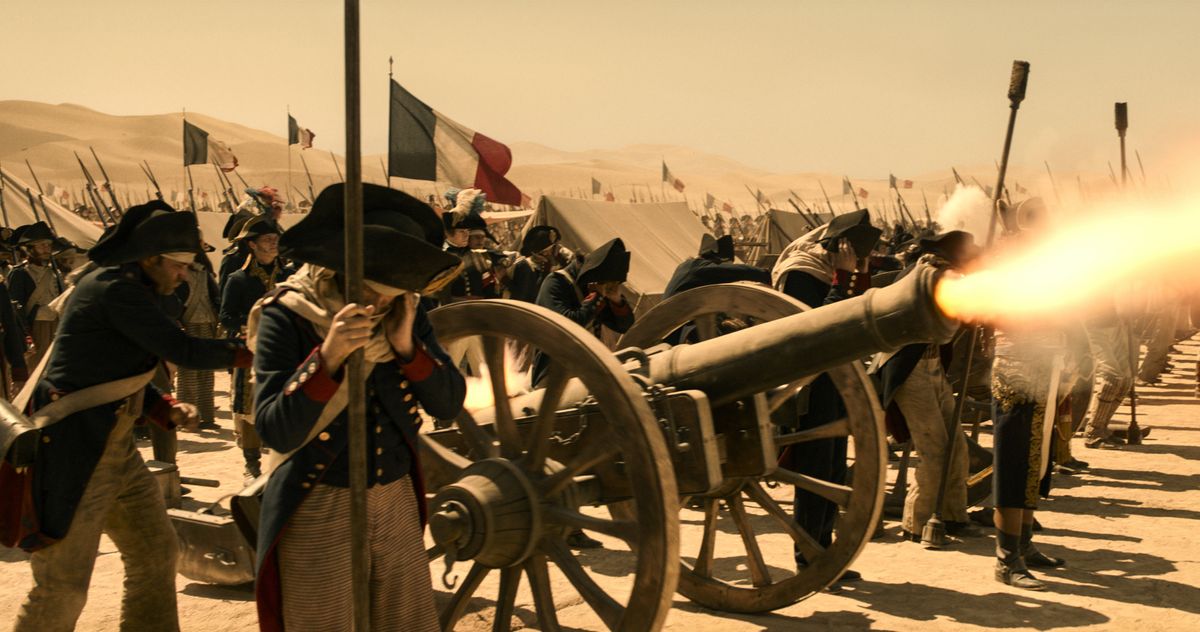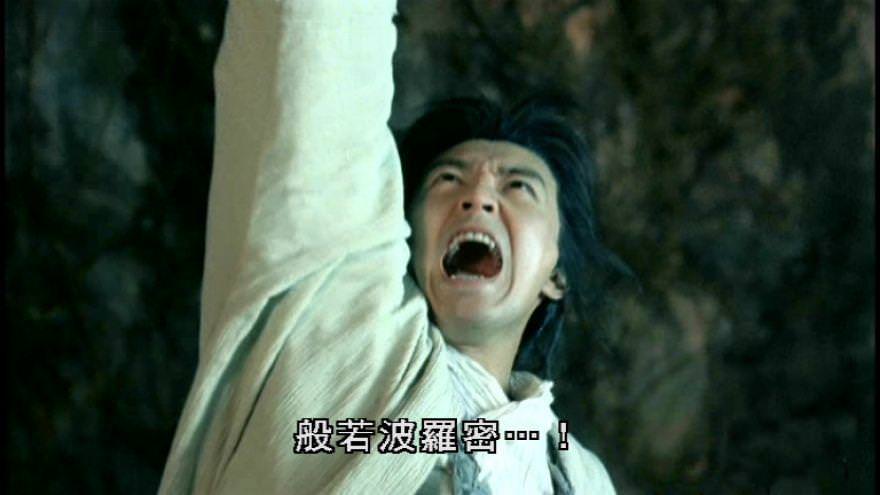Lagrange's solution of cubic equation
Part One. Motivating example
Suppose that \(\alpha, \beta\) are the roots to the following quadratic equation
$$x^2 + qx + p = 0$$Following Viete's theorem, we can directly express \(\alpha + \beta\) and \(\alpha \beta\) in terms of the coefficients of the equation, and they can be written as
$$ \left\{ \begin{array}{l} \alpha + \beta = -q\\ \alpha \beta = p \end{array}\right. $$We know that \(\alpha\) and \(\beta\) can be written as linear combination of \(\alpha + \beta\) and \(\alpha - \beta\):
$$\begin{pmatrix}\alpha \\ \beta \end{pmatrix} = \mathbf{a} ( \alpha + \beta) + \mathbf{b} (\alpha - \beta) $$where \(\mathbf{a} = \begin{pmatrix}\frac{1}{2} & \frac{1}{2}\end{pmatrix}\) and \(\mathbf{b} = \begin{pmatrix}\frac{1}{2} & -\frac{1}{2}\end{pmatrix}\). We also know that \((\alpha - \beta)^2\) can be written in terms of \(p\) and \(q\) since
$$ \begin{align} (\alpha - \beta)^2 &= \alpha^2 + \beta^2 - 2 \alpha \beta\\ &= (\alpha + \beta)^2 - 4 \alpha \beta\\ & = q^2 - 4 p\\ \alpha - \beta &= \sqrt{q^2 - 4 p} \end{align} $$This expression enables us to write
$$\begin{pmatrix}\alpha \\ \beta \end{pmatrix} = -\tfrac{q}{2} + \begin{pmatrix}1 \\ -1\end{pmatrix}\sqrt{\left(\tfrac{q}{2} \right)^2 - p}$$Here, \(\begin{pmatrix}1 & -1\end{pmatrix}\) captures the square roots of unity. As we will see in next section, the cube roots of unity play similar important role in the analytical expression of the cubic formula.
Following Grant Sanderson and Po-Shen Loh 羅博深, we denote the mean of the roots \(\frac{\alpha + \beta}{2}\) with \(m\) and thus we can replace \(-\frac{q}{2} \) with \(m\), and the quadratic formula is thus
$$ \begin{pmatrix} \alpha \\ \beta \end{pmatrix} = m + \begin{pmatrix} 1 \\ -1 \end{pmatrix}\sqrt{m^2 - p} $$
| \(v_0\) | \(\phi\) | \(X\) | \(T\) | \(y_s\) | \(\omega\) | \(v_e\) |
|---|---|---|---|---|---|---|
| 230 | 66°22' | 3961 (3200) | 43.0 (40.7) | 2263 (2017) | 66°22' (70°2') | 230 (206) |
| 230 | 35°0' | 5067 (4300) | 26.9 (25.9) | 887 (820) | 35°0' (39°23') | 230 (195) |
| 90 | 65°15' | 628 (600) | 16.7 (16.6) | 340 (336) | 65°15' (66°31') | 90 (88) |
| 90 | 34°2' | 766 (750) | 10.3 (10.2) | 129 (127) | 34°2' (35°1') | 90 (88) |
The range \(X\), time of flight \(T\), height of vertex \(y_s\), angle of descent \(\omega\), and final velocity \(v_e\) are given, calculated from the formulae fro a vacuum; the corresponding results in practice are given in brackets.
Part Two. Cubic equation
Suppose that \(\alpha, \beta, \gamma\) are the roots to the cubic equation
$$x^3 + qx + p= 0$$If we suppose that \(\alpha = u + v\), then we can show that
$$ \left\{ \begin{array}{l} u^3 + v^3 = -p\\ uv = -\frac{1}{3}q \end{array}\right. $$This is something we can solve quadratically
$$\begin{pmatrix}u^3\\ v^3\end{pmatrix} = -\tfrac{p}{2} + \begin{pmatrix}1 \\ -1\end{pmatrix} \sqrt{\left(\tfrac{p}{2}\right)^2 + \left(\tfrac{q}{3}\right)^3 }$$Since the quadratic term is missing, following Viete's theorem, we must have
$$\alpha + \beta + \gamma = 0$$The missing quadratic term motivated Lagrange to write \(\beta\) and \(\gamma\) as linear combinations of \(u\) and \(v\) with \(\omega\) and \(\omega^2\) as the coefficients.
$$ \begin{pmatrix} \alpha\\ \beta \\ \gamma \end{pmatrix} = \begin{pmatrix} 1\\ \omega \\ \omega^2 \end{pmatrix} u + \begin{pmatrix} 1\\ \omega^2 \\ \omega \end{pmatrix}v $$since we have
$$ \begin{align} \alpha + \beta + \gamma &= (u+v) + (\omega u+ \omega^2 v) + (\omega^2 u+\omega v)\\ &=u(1 + \omega + \omega^2) + v(1 + \omega^2 + \omega)\\ &=\underbrace{(u+v)}_{\neq 0} \, \underbrace{(1 + \omega + \omega^2)}_{=0} \end{align}$$- J. L. Lagrange (1770, 1771) Réflexions sur la résolution algébrique des équations [Reflections on the algebraic solution of equations]. Nouveaux Mémoires de l'Académie royale des Sciences et Belles-Lettres de Berlin (pour les années 1770 et 1771). The first two sections of this memoir were included in the 1770 volume, the following ones in the 1771 volume.
- Viete's theorem for quadratic equation can be easily demonstrated by expanding
$$(x - \alpha)(x - \beta)$$
to \(x^2 -(\alpha + \beta)x + \alpha \beta\) and comparing the coefficients of \(x^n\) for \(n = 2, 1, 0\).
- C. Cranz, K. Becker (1921) Handbook of ballistics, Volume 1: Exterior ballistics, being a theoretical examination of the motion of the projectile from the muzzle to the target, His Majesty's Stationery Office, London. See p. 17.
- When Lavoisier was guillotined on May 8, 1794, during the French Revolution's Reign of Terror, Lagrange (b. 1736, d. 1813) said on the death of Lavoisier: ‘It took only a moment to cause this head to fall and a hundred years will not suffice to produce its like.' The original French version was: ‘Il ne leur a fallu qu'un moment pour faire tomber cette tête, et cent années peut-être ne suffiront pas pour en reproduire une semblable.'
- The Dutch Republic was annexed by France in 1810. Before annexation, the Netherlands was known as the Batavian Republic (established 1795 under French revolutionary influence), later becoming the Kingdom of Holland under Napoleon’s brother Louis Bonaparte (1806–1810). In July 1810, Napoleon dissolved the Kingdom of Holland and formally annexed it into the French Empire. This meant the Dutch territories became departments of France, ruled directly from Paris. The annexation lasted until 1813, when Napoleon’s defeat led to the restoration of Dutch independence.
Napoleon was exiled to Saint Helena in October 1815 after he was defeated in the Battle of Waterloo. Raffles, who was a Napoleon fanboy, visited his idol on 19 May 1816. Raffles was rather disappointed by the meeting and in a letter written after the meeting, he reportedly described Napoleon as ‘a wild animal caught but not tamed', and ‘a man without one spark of soul, feeling, or humanity', and ‘he looked down on all mankind as his inferiors'. Raffles's comments reveal that Napoleon in St. Helena was a cold, calculating man with zero empathy. This is especially jarring considering that he had once ruled most of Europe. Raffles's encounter with Napoleon is a textbook case of how idealization from afar crumbles under the weight of reality. ‘Never meet your idol' captures this story perfectly.
Raffles was knighted by the Prince of Wales (the future King George IV) in 1817. He returned to East India and was appointed Lieutenant-Governor of Bencoolen in Sumatra. Two years later, Raffles cajoled Temenggong Abd al-Rahman to help to convince Sultan Hussain to cede Singapore to him, and the rest, as they say, is history.
- Suppose that \(\omega\) is the solution to \(x^3 = 1\), then
$$x^3 - 1 = (x - 1)(1 + x + x^2) = 0$$
which produces
$$ \left\{ \begin{array}{l} \omega - 1 = 0\\ 1 + \omega + \omega^2 = 0 \end{array}\right. $$ The \(\omega\) in the second equation are given by $$ \omega = \frac{-1\pm i\sqrt{3}}{2} $$ - Following Viete's theorem, the following elementary symmetric polynomials can readily written as functions of \(p\) and \(q\). $$ \left\{ \begin{array}{l} \alpha \beta \gamma =-p\\ \alpha \beta + \beta \gamma + \gamma \alpha = q\\ \alpha + \beta +\gamma = 0 \end{array}\right. $$ Therefore $$\alpha = \sqrt[3]{\frac{\alpha \beta \gamma}{2} + \sqrt{\left(\frac{\alpha \beta \gamma}{2}\right)^2 + \left(\frac{\alpha \beta + \beta \gamma + \gamma \alpha }{3}\right)^3 }}$$ $$+\sqrt[3]{\frac{\alpha \beta \gamma}{2} - \sqrt{\left(\frac{\alpha \beta \gamma}{2}\right)^2 + \left(\frac{\alpha \beta + \beta \gamma + \gamma \alpha }{3}\right)^3 }}$$ $$\beta = \frac{-1+ i\sqrt{3}}{2}\sqrt[3]{\frac{\alpha \beta \gamma}{2} + \sqrt{\left(\frac{\alpha \beta \gamma}{2}\right)^2 +\left(\frac{\alpha \beta + \beta \gamma + \gamma \alpha }{3}\right)^3 }}$$ $$+\frac{-1 - i\sqrt{3}}{2}\sqrt[3]{\frac{\alpha \beta \gamma}{2} - \sqrt{\left(\frac{\alpha \beta \gamma}{2}\right)^2 + \left(\frac{\alpha \beta + \beta \gamma + \gamma \alpha }{3}\right)^3 }}$$ $$\gamma = \frac{-1- i\sqrt{3}}{2}\sqrt[3]{\frac{\alpha \beta \gamma}{2} + \sqrt{\left(\frac{\alpha \beta \gamma}{2}\right)^2 + \left(\frac{\alpha \beta + \beta \gamma + \gamma \alpha }{3}\right)^3 }}$$ $$+\frac{-1 + i\sqrt{3}}{2}\sqrt[3]{\frac{\alpha \beta \gamma}{2} - \sqrt{\left(\frac{\alpha \beta \gamma}{2}\right)^2 + \left(\frac{\alpha \beta + \beta \gamma + \gamma \alpha }{3}\right)^3 }}$$




Comments